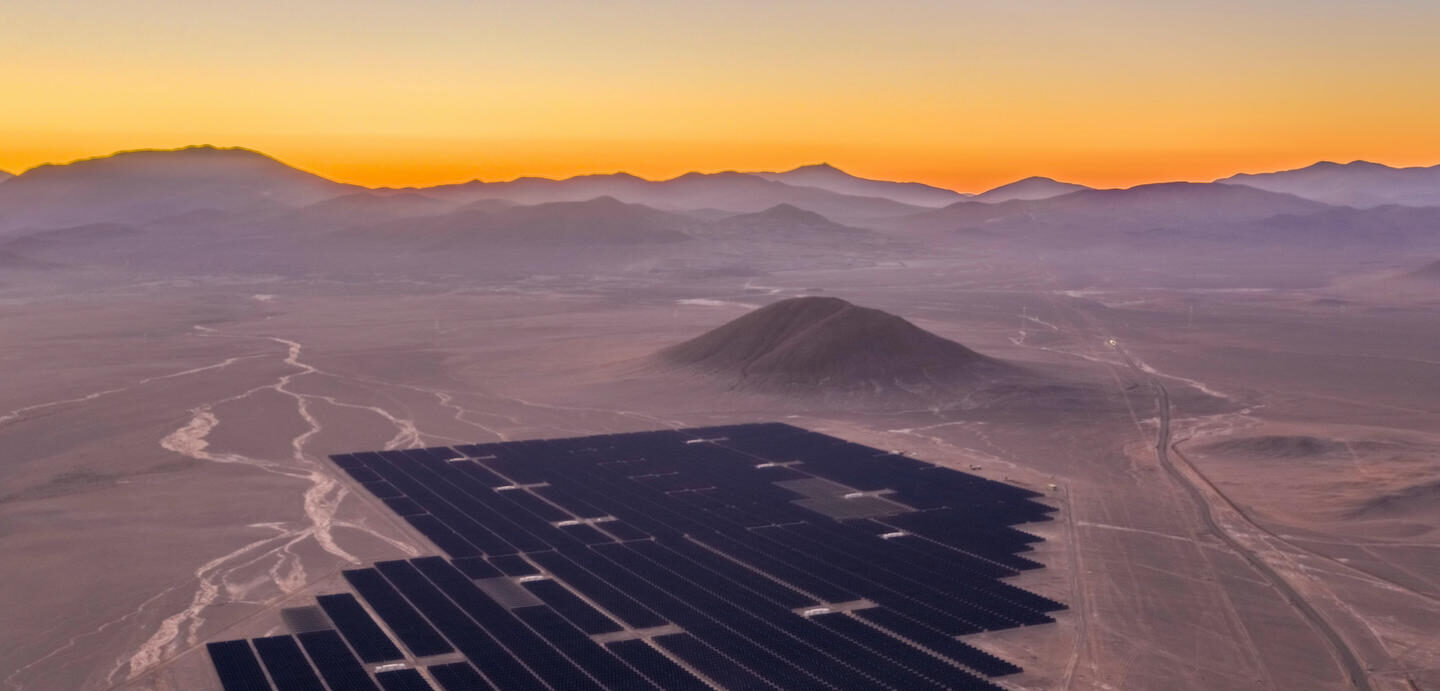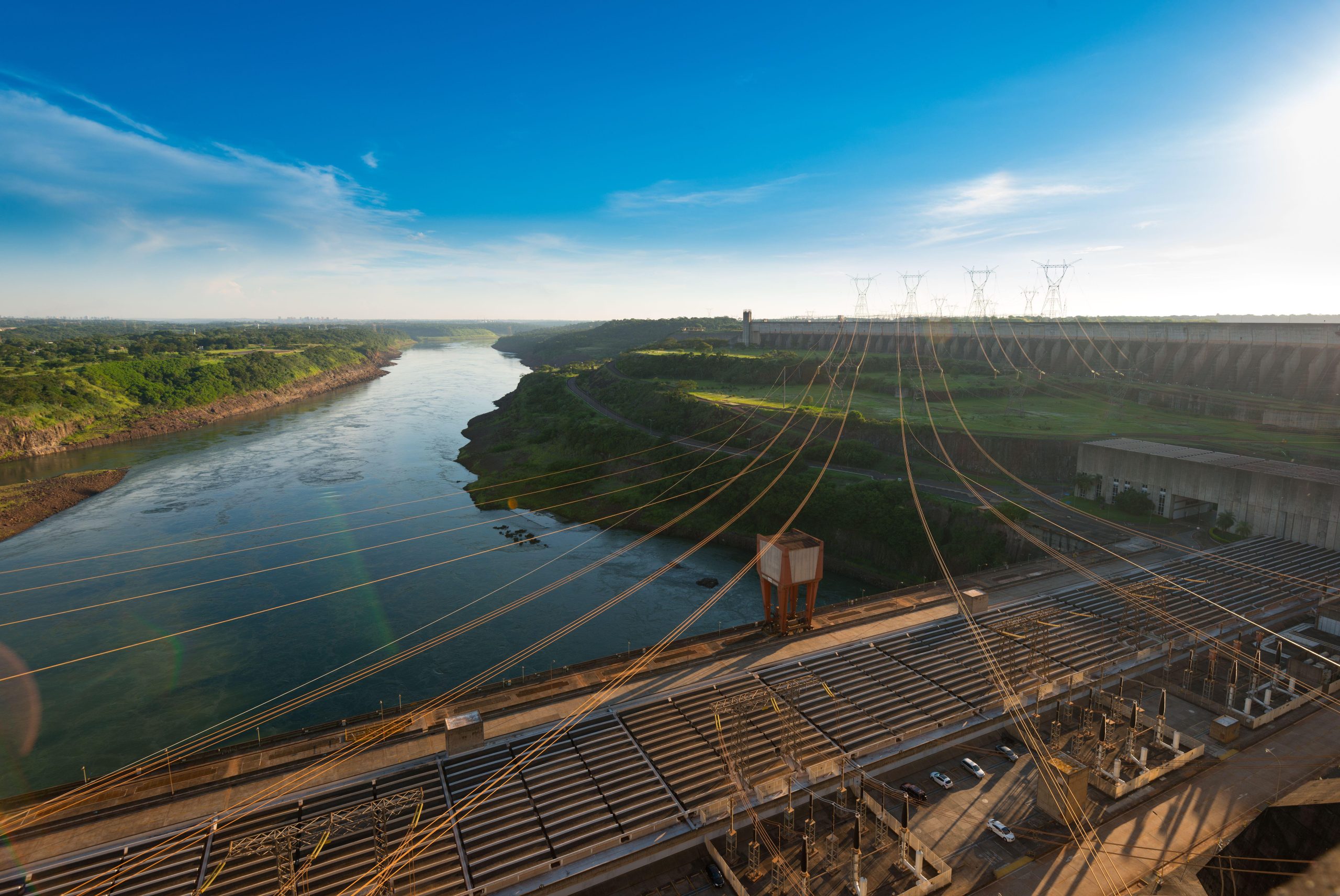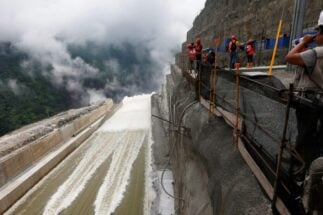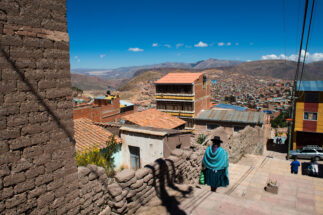Hydropower is the principal source of electricity in most Latin American countries, accounting for 45% of the region’s total electricity needs. This is far greater than the average of 16% worldwide – and many more projects are under construction. But hydropower isn’t an infallible energy source. Climate change could trigger considerable negative effects.
Fluctuating rainfall, rising temperatures, melting glaciers and extreme weather effects, among other consequences of the climate crisis, can adversely affect hydropower plants and overall energy generation. This should force governments and investors to adapt and consider different climate scenarios when assessing the reliability and bankability of new hydro projects.
45%
of Latin America's energy generation comes from hydropower, almost three times the global average
With the region currently evaluating its transition away from fossil fuels, Diálogo Chino presents a unique interactive map that plots Latin America’s hydropower plants, detailing their installed energy capacity, status and ownership. The map overlays rainfall variation under 2C, 3C and 4C warming scenarios.
The map plots 439 hydro energy plants in 24 Latin American and Caribbean countries for which we were able to collect data. Given the number of projects in Brazil, we set the minimum installed capacity for projects from that country at 100 megawatts (MW). For similar reasons, the lower limit for inclusion in the dataset for projects from Mexico was 50 MW. For Central America and the Caribbean it was 30 MW.
The data on the plants’ locations and statuses was compiled by cross-checking information from state sources, operating companies, industrial guilds and press releases. We obtained figures for rainfall variation in their designated Latin American subregions from the Intergovernmental Panel on Climate Change (IPCC), the international group of leading climate scientists.
Hydropower has many impacts that raise serious questions about its sustainability, ranging from deforestation and destruction of indigenous lands to cost overruns and impacts on river flows. While there will be some variation within regions, our map aims to show where the long-term future of hydropower could be in doubt due to a changing climate – and where, conversely, the potential will increase.
Latin America’s hydropower
Latin America’s unique geography and meteorology explain the widespread use of hydropower. Its four largest drainage systems cover about two-thirds of the continent. Most river basins are located east of the Andes and flow towards the Atlantic Ocean. It also has numerous glaciers that feed hydro plants.
Despite many multilateral development finance institutions agreeing to ditch hydro from their portfolios in recent years, mega-projects are still coming online. In 2020, Brazil surpassed China as the country with the largest annual increase of installed hydropower capacity as it added 4,919 MW with the inauguration of the Belo Monte dam. In Colombia, the Ituango dam is expected to start operating this year, meeting 17% of the country’s energy demand. Argentina, meanwhile, is moving ahead with the massive Kirchner-Cepernic dams.
However, increased climate variability is a new challenge for a region historically dependent on hydropower. During the last few decades, rainfall has increased in coastal regions of Andean countries, such as Ecuador and Colombia, while it has declined in large parts of Central America, southern Chile and southwest Argentina.
A study by the International Energy Agency (IEA) assessed the climate impacts on over 86% of installed hydropower capacity in Latin America, focusing on 13 countries with the largest amount. It found that the regional hydropower capacity factor is projected to decline until the end of the century due to the changing climate.
The higher the greenhouse gas emissions concentration, the stronger the negative impact on overall hydropower generation, according to the study. However, this changes depending on the region. The Andean region is projected to see a slight increase in hydropower capacity, while the rest of South America and Central America would see a decrease.
“Like other types of infrastructure, the hydropower sector is starting to experience the impacts of climate change. Water availability and hydropower generation can be affected by changes in hydrological patterns and extreme weather events. In some areas, however, these changes may increase hydropower production,” a spokesperson for the International Hydropower Association (IHA) said.
Winners and losers
Chile is already suffering from a historic and prolonged drought. Yet, it is the Southern Cone country with the most planned hydroelectric plants: Los Lagos and San Pedro in the south, and Nido de Águila and Los Cóndores in the central region.
It is clear from the map that Chile will be the country most affected by the decrease in rainfall. Currently, rainfall in Chile is shorter and more intense, and prolonged rainfall is increasingly scarce. According to data from the consulting firm Systep, Chilean hydroelectric generation has decreased during the first three months of the year, compared to 2021, partly due to the drought.
Brazil will be unevenly affected by climate change. The North, Midwest and Northeast portions will be dryer — posing a threat to vulnerable biomes such as the Amazon and Cerrado. Brazil’s largest hydropower plants are in the country’s north, presenting a big risk to energy security. However, the Southeast and South areas of the country will face an increase in precipitation.
Also concerning is that the country is planning its third largest hydropower plant in a region that is expected to face more consecutive dry days. The São Luiz do Tapajós hydropower plant (8,040 MW), shelved in 2016 due to environmental concerns, made a comeback in 2022 as Brazil eyed presidential elections and candidates saw opportunities to make promises of job creation to the electorate. Located in the state of Pará, the region could have over 40 consecutive dry days under the 4C warming scenario. It could also experience 15% less precipitation.
Yet, upcoming hydropower plants are not the only problem. Brazil’s Belo Monte (11,233 MW) and Tucuruí (8,535 MW) plants, both in the North, may face a reduction in water flows, energy generation and efficiency. This could lead to an increase in energy bills and turning to coal and gas-powered energy plants to meet its energy demand, as happened in 2021.
The map also shows that the east of Colombia will see a significant drop in rainfall under all warming scenarios. Of the 34 hydroelectric plants identified in the country, 29 are functional, one is under construction and four are planned. Most of Bolivia will also experience a moderate drop in rainfall, amid plans to expand hydroelectric capacity in the next few years.
Uruguay, most of Paraguay and Peru, the Northeast of Argentina and Ecuador are expected to see an increase in rainfall under all warming scenarios. In Ecuador, 92% of the energy came from hydropower last year, with several projects such as Toachi Pilatón y Coca Codo Sinclair involved in mismanagement. Peru has high hopes for hydro, with half of the projects on the map operational or being considered.
Hydropower represents 10% of Mexico’s total energy, although most plants were built in the 1950s and 1960s, and some in the 1970s. They have accumulated sediment, which causes problems generating the installed capacity and the current government has focused on modernisation, and upgrading equipment to generate more electricity.
The majority of the plants are in Puebla, Veracruz, Oaxaca, Guerrero and Chiapas and from the centre to the north, in Michoacán and in Nayarit. Hydroelectricity is one of the pillars of the government’s energy plans. It considers hydro to be pivotal to the energy transition, despite problems of reduced capacity due to drought.
The way forward
To anticipate, accommodate and recover from adverse climate impacts, Latin American hydropower needs to become more climate-resilient, experts agree. Resilient hydropower can benefit water management, acting as a buffer against water variability, and also support the region’s energy transition.
The IEA recommends that governments mobilise investment in the modernisation of ageing hydropower plants, as over 50% of the installed capacity in the region is over 30 years old (the standard lifespan of a dam is 30–80 years). The IEA also suggests that governments include climate impacts on hydropower in national adaptation plants. Only six of those 13 reviewed by the agency have done this.

A study by the Inter-American Development Bank (IADB) on hydropower in Central America argues hydropower should not necessarily be wholly dismissed because of climate concerns, as early adaptation measures can help address key challenges. However, the IADB argues that climate change should be a key factor when planning a new plant.
The benefits of resilient electricity systems are much greater than the costs in most climate scenarios. It is estimated that for every dollar invested in climate-resilient infrastructure, six can be saved. If the actions needed for resilience are delayed by ten years, the cost will almost double.
“In many locations, increased water can be better managed through powered infrastructure such as hydropower. Not only are most facilities robust for many decades, but most dams are also built as flood and drought control plus irrigation,” a spokesperson for IHA said. “Powered dams can be resilient climate mitigators and adapters.”
Data compiled by Emilio Godoy, Damián Profeta, Jorge Chávez and Sarita Reed, with support from Robert Soutar, Fermín Koop, Flávia Milhorance, Alejandra Cuéllar, Jack Lo, Lívia Machado Costa and Marina Bello. Map designed by Julia Janicki.









